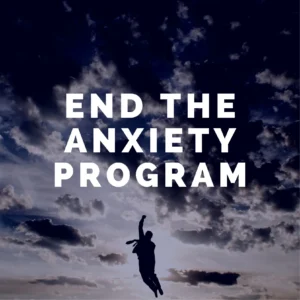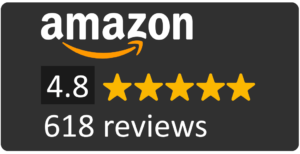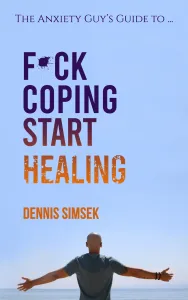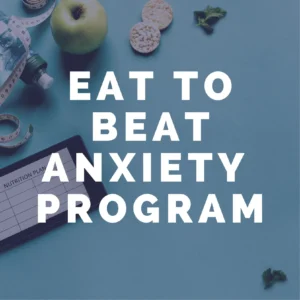I want to start plain and honest: if you’re still stuck in health anxiety, it’s not because you’re weak or because you tried the wrong trick. It’s because of one habit that keeps replaying again and again. In this post I’ll walk you through what that habit looks like, why it keeps you trapped, and how to change it in real life. I’m writing this in the same voice I use on the podcast, first person, simple, direct.

Table of Contents
The Real Reason: Reacting vs Responding
Here’s the heart of what I teach: reacting keeps health anxiety alive. Reacting is automatic. A strange twinge shows up, and your mind screams, “What is wrong with me?” You Google, you seek reassurance, you catastrophize. The symptom then grows and moves. I’ve seen this pattern thousands of times.
Responding is different. Responding is conscious. It’s pausing, taking a breath, naming the sensation, and choosing a calm, curious stance instead of panic. When I respond, I tell myself, “This is uncomfortable, not life threatening.” That choice sends a message to my nervous system and to my subconscious: I am safe. Over time that message starts to change how my body reacts. This is the Real Reason the cycle breaks or stays.
Why this difference matters
Reacting fuels the fight or flight system. Responding soothes it. When you practice responding, you retrain your brain and body. I can’t promise symptoms will vanish overnight, but I can promise your relationship with anxiety will change. This work runs deeper than symptom chasing, it rebuilds trust in your body.
Why Reacting Keeps You Stuck
When I react, I feed the anxious identity. The anxious identity is the version of you that says, “I am the person who must fix this now.” That identity wants action: check, call, search, take something, or get reassurance. Those actions feel like safety, but they actually reinforce the belief that you are in danger.
When you keep doing the same actions, your nervous system learns to expect danger every time you notice a sensation. I’ve watched people get stuck in that loop because their default move is to react. Breaking that default is the work.
The cost of reacting
- It strengthens catastrophic thinking.
- It maintains hypervigilance to bodily sensations.
- It trains your brain to escalate harmless sensations into big threats.
If you want to heal, you need a different habit.
The True Cause of the Anxious Identity
At its core, the anxious identity forms because somewhere along the line we learned safety = doing something immediately. That learning can come from personal history, from stories we tell ourselves, or from moments when anxiety felt unbearable and reacting offered temporary relief.
I call this the root cause because until the identity shifts, symptom management will always be a band-aid. The practice of responding reprograms that identity. Over time, the “I must act” voice gets quieter and the “I can tolerate this” voice grows stronger.
How Responding Rewires Your Nervous System
Responding is not a magic trick. It’s a set of small, consistent choices that teach your body a new pattern. Each time I choose to respond instead of react, I’m giving my nervous system a new signal: this moment is safe. The brain stores that signal and gradually changes how it reacts to sensations.
What changes when you respond
- Less instant escalation to panic.
- Fewer compulsive checks and searches.
- More curiosity and less judgment about sensations.
- A new identity that doesn’t feed anxiety.
This is slow work, but steady practice stacks up. I encourage you to treat it like training a muscle. The more reps you get, the stronger the new habit becomes.
Practical Steps to Start Responding Today
You don’t need a long ritual. Here are simple moves I use and teach, and they actually work when you do them often.
Pause and breathe (my first step)
When a symptom appears, stop. Take one slow, deep breath. Then another. That slows the nervous system and gives you space to choose.
Name the sensation
Say to yourself, short and simple: “I feel tightness in my chest,” or “I’m noticing dizziness.” When I name it, the mind often stops spinning. Naming keeps the experience just that, a sensation, not an emergency.
Ask a short, neutral question
Try: “Is there evidence this is dangerous right now?” or “Is my mind jumping to conclusions?” These are not long debates. They are quick reality checks that often show the fear for what it is: a thought, not a fact.
Let curiosity replace judgment
Instead of “This is bad,” try curiosity: “What is my body trying to tell me?” That doesn’t mean I ignore serious signs if they exist. It means most moments are safe to explore.
Practice without obsessing about results
Don’t measure success by whether your symptoms disappear. Measure success by whether you responded and how many reps you gave yourself. Progress matters more than perfection.
Small daily practices I recommend
- Pause and breathe when you notice something. Aim for many small reps.
- Name sensations out loud or in your head.
- Record quick wins: “I paused today instead of searching.”
- Remind yourself: you are building a new relationship with anxiety.
Real Reason to Build a New Relationship with Anxiety
The Real Reason you heal is not because symptoms stop immediately. It’s because you stop feeding the anxious identity. When you stop feeding it, that identity loses power. You move from being someone who chases safety to someone who tolerates discomfort and trusts the body to handle it. That shift is the real work of healing.
When it feels vulnerable or uncertain
When you start responding, it can feel strange. You might wonder, “Will this actually work for me?” That sense of vulnerability is normal. I always tell people: keep going. Trust the process. Over time the vulnerability becomes courage, and courage becomes a steady way of living.
Next steps and resources
If you’re ready to take this further, consider a step-by-step program. I run a 12-week Health Anxiety Recovery Program that teaches these skills in a structured way, with practical exercises and daily practice. You can find details at TheAnxietyGuy.com under Health Anxiety.
I’ve also written books that go deeper into this work if you prefer the written route. If you want one suggestion right now: don’t wait for the perfect moment. Start practicing one small step today, pause, breathe, name the sensation, and repeat it as often as you can.
You are more than anxiety. I’ve been where you are, I’ve helped many people move through it, and I believe this practice will make a real difference if you stick with it.




